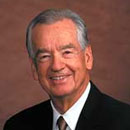Boeing's fifth 777-9, part of delayed 777X family, takes first flight
Published in Business News
Boeing’s fifth 777-9 took its first flight from Paine Field on Tuesday, marking another step in the jet manufacturer’s journey to get its latest plane model out of the factory.
The 777-9, part of Boeing’s 777X family, has been delayed for years as the company worked to fix defects and faced heightened regulatory scrutiny after fatal 737 Max crashes in 2018 and 2019. But Boeing executives now are optimistic that the plane will receive certification from the Federal Aviation Administration, with first delivery expected in 2026.
Once in the air, the 777X family will be more fuel-efficient than other widebody planes on the market, Boeing says, featuring the largest jet engines ever built and wings so long that the plane has foldable wingtips so it can fit into airports.
Boeing’s four 777-9 test planes have collectively flown 1,400 flights and more than 4,000 hours.
On Tuesday, a fifth plane entered the mix when it took off for its first ever flight around 11 a.m. from Paine Field in Everett, Washington. It is the first time Boeing has launched a 777-9 first flight in five years.
Boeing employees and spectators gathered to watch the takeoff from the balcony of the Future of Flight museum or the grassy knolls outside the airport. The crowd cheered and snapped pictures as the all-white plane taxied toward the runway, unfolded its wing tips and prepared for takeoff.
The plane made a deliberate stop at the end of the runway during its first go-round, to test that the brakes worked as expected. Then, it repeated the process and took off into the sky.
The plane, WH286, is a production plane, meaning it won’t be used for the same tests that the other four planes in the 777-9 fleet have been performing.
Unlike flight test planes, production planes are not equipped with unique wiring, sensors and other systems to collect data during flight for the certification process. The production plane also doesn’t yet have interior features like seats and side walls. Those pieces will come later.
Its primary function is to test that the plane can withstand a lightning strike without any damage to its critical systems.
But, before it can head off in search of a lightning storm, Boeing sent the production plane on a first flight to check that all the systems are working as expected. First flights typically check movable systems, like that the landing gear raises and lowers properly, and that the plane can move through different turns and bank angles.
Boeing has already performed those tests on the ground and will recreate them in the air Tuesday.
“The whole point of a first flight is to not be surprised,” said Boeing spokesperson Lori Gunter. “It’s really just exercising the airplane.”
The plane flew from Paine Field to Moses Lake, Washington, before returning to Everett around 1:30 p.m. Tuesday. The 2 hour and 27-minute flight reached an altitude of 39,000 feet and an airspeed of Mach .84, or the equivalent of ground speed of 511 knots.
Ted Grady, chief pilot for the 777-9 who was flying the plane Tuesday, said the first flight went “seamlessly.”
“It really was a pretty smooth flight. You could tell that the team had the airplane in excellent condition,” he said.
Grady has been involved with the 777X program since its very first flight, and piloted the first flight for the second 777-9. Now, the launch of the fifth plane “feels like progress,” he said. “We’re expanding and growing and making progress.”
The plane will perform one more local test before heading to Arizona to begin testing its resilience against electromagnetic interference and lightning strikes.
The 777X family, which Boeing introduced more than a decade ago, includes two passenger planes, the 777-8 and 777-9, as well as a freighter, the 777-8F.
The first member of the family set to be delivered to customers, the 777-9, was stuck in unofficial test flights for four years.
Boeing started officially testing the 777-9 in July 2024 but faced another setback just one month later when inspectors found a crack in a structural component that connects the plane’s engine to the airframe.
Now, working a solution to the cracked thrust link, Boeing’s test fleet is running through a series of activities to achieve the FAA certification to deliver the new planes to customers and fly passengers.
CEO Kelly Ortberg told investors last month during Boeing’s quarterly earnings call that there are “no new technical issues” with the 777-9 test fleet. He’s optimistic about the plane, saying there has been “good progress so far, but we still have a lot of work to do.”
©2025 The Seattle Times. Visit seattletimes.com. Distributed by Tribune Content Agency, LLC.











Comments